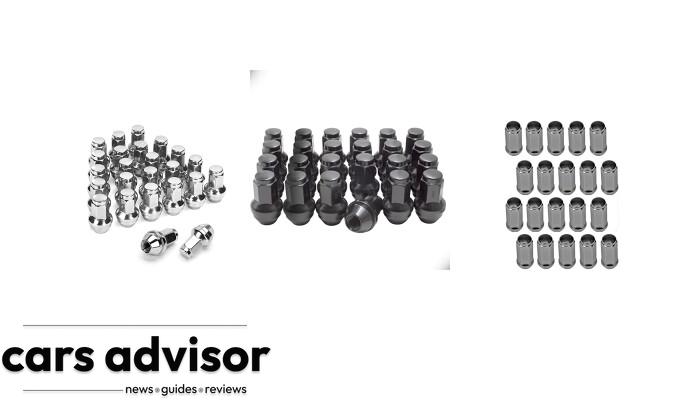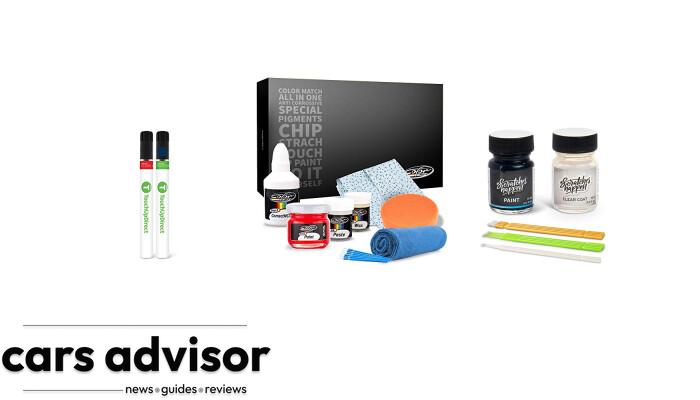Can you use yellow radiator fluid instead of green? It’s a question many car owners have pondered, especially when topping off their vehicle coolant reservoirs. But before we dive in headfirst and try to answer that crucial query, let’s take a moment to realize the importance of coolants for our engines.
Antifreeze, or radiator fluid, ensures your engine stays at an optimal temperature while protecting against corrosion and other negative side effects from various elements on the road.
With so much at stake in selecting the appropriate coolant type for your engine, it’s vital to understand the differences between yellow and green fluids – and what could happen should you mix them.
TLDR
- Yellow and green antifreeze are not the same.
- Green antifreeze is typically propylene glycol based.
- Yellow antifreeze is ethylene glycol based.
- Coolant colors include blue, yellow, green, red, pink, turquoise, orange, and purple.
- Mixing different types of antifreeze is not safe.
- IAT (Inorganic Acid Technology) is the traditional green stuff that is pretty much only used on older cars.
- Yellow antifreeze and yellow coolant are different but can be replaced.
Understanding Different Types Of Radiator Fluid
Knowing the difference between green and yellow antifreeze is essential as they have different chemical compositions and are not interchangeable.
Green Antifreeze
As a car enthusiast, I’ve come to appreciate the importance of using the right type of antifreeze in my vehicle. Green antifreeze, one of the most common types, is typically propylene glycol-based and has been used for decades as an industry standard.
One example from my own experience involves a classic Ford Mustang that I restored a few years ago. This vintage beauty called for green antifreeze due to its traditional cooling system and engine design.
The propylene glycol-based formula worked wonders in preventing corrosion within the car’s components while keeping the engine running at optimal temperature levels during those hot summer days or chilly winter nights.
Yellow Antifreeze
As mentioned in the previous section, yellow antifreeze is an ethylene glycol-based coolant that is often used by manufacturers like Ford. Unlike green antifreeze, which contains propylene glycol, yellow antifreeze has a different chemical composition and therefore should not be mixed with other types of coolant.
It’s important to note that while yellow antifreeze and yellow coolant are not the same thing, they are often used interchangeably. If you need to replace your yellow antifreeze or yellow coolant, it’s recommended that you stick with what the manufacturer recommends for your specific make and model of vehicle.
Other Colors Of Antifreeze
There are a variety of coolant colors available, each serving a different purpose. Mixing different types of antifreeze could cause damage to your car, so it’s important to know what you’re dealing with. Here are some other colors of antifreeze and their properties:
- Blue: Typically an ethylene glycol-based coolant that contains silicates for corrosion protection.
- Red/Pink: Often used in newer vehicles because it is long-lasting and has an extended life span.
- Turquoise: This type of antifreeze is similar to the traditional green stuff but has a higher silicate content for additional protection against corrosion.
- Orange: Some manufacturers prefer this type of antifreeze because it is made from a hybrid OAT/HOAT formula and can last up to five years with no change required.
- Purple: This type of coolant is designed for high-performance engines and racing applications as it offers superior heat dissipation and maximum protection against corrosion.
Regardless of the color, always refer to your vehicle owner’s manual or contact the manufacturer to determine the specific requirements for your car’s radiator fluid.
Compatibility Of Yellow And Green Radiator Fluids
It’s essential to understand the compatibility of yellow and green radiator fluids before using them interchangeably because different types of vehicles require specific types of coolant, and mixing them can lead to severe engine damage.
Manufacturer Recommendations
As an experienced car owner, I know the importance of following the manufacturer’s recommendations when it comes to radiator fluid. Each car is designed with specific needs in mind, and using the wrong type of coolant can lead to serious problems down the line.
For example, Ford vehicles have different types of antifreeze – yellow for older models and orange for newer ones – while other manufacturers may recommend a universal antifreeze that can be used in any vehicle.
Following these guidelines ensures that you are using a coolant that is compatible with your engine’s chemical composition and will protect against corrosion while maintaining optimal engine temperature.
Impact On Vehicle Performance
Choosing the wrong radiator fluid can have a significant impact on your vehicle’s performance. Using yellow radiator fluid instead of green, for example, could result in reduced coolant effectiveness and potential engine damage.
Manufacturers typically recommend specific types of antifreeze based on the chemical composition of their engines, so it’s important to stick with what is recommended by the manufacturer.
Mixing different types or colors of antifreeze can also cause issues such as cooling system problems and corrosion that can lead to a shortened lifespan of your radiator.
Mixing Yellow And Green Fluids
It’s essential to note that mixing yellow and green radiator fluids is not recommended. Manufacturers often recommend using a specific type of antifreeze for their vehicles, and it’s crucial to follow these recommendations.
Mixing different types of coolant can cause chemical reactions, leading to severe engine damage, as well as issues with your car’s cooling system.
For instance, Ford has two different types of antifreeze – yellow and orange-colored coolants – that cannot be mixed without causing damage. It’s important always to check the owner’s manual or consult an expert on what kind of antifreeze is suitable for your vehicle before making any changes.
The Risks Of Using Yellow Radiator Fluid Instead Of Green
Using yellow radiator fluid instead of the recommended green antifreeze can result in potential engine damage, cooling system issues, reduced coolant effectiveness, and even a shortened lifespan for your radiator.
Potential Engine Damage
Using yellow radiator fluid instead of green can lead to potential engine damage. This is because different types of coolant have different chemical compositions, and mixing them can cause a reaction that damages your vehicle’s engine.
Mixing these two types of coolant can create sludge in the cooling system, which can clog radiator hoses and cause your engine to overheat. Over time, this could also result in corrosion within the cooling system or even severe engine damage.
Cooling System Issues
Mixing yellow and green radiator fluids can cause significant cooling system issues in your vehicle. When different types of antifreeze are mixed, they can react chemically, which leads to corrosion within the engine and radiator.
This corrosion can lead to leaks and blockages in the cooling system that will cause your engine to overheat.
Additionally, using yellow radiator fluid instead of green recommended by the manufacturer can have detrimental effects on your vehicle’s performance. Yellow coolant is typically made with ethylene glycol instead of propylene glycol, making it incompatible with many modern engines.
It’s crucial to choose the right type of radiator fluid for your car as it helps maintain optimal engine temperature while preventing costly repairs or even total failure later down the line.
Reduced Coolant Effectiveness
It’s important to use the right coolant for your vehicle, as using the wrong one can lead to reduced effectiveness. Mixing yellow and green antifreeze is not recommended, as it may result in decreased lubrication and cooling properties, leading to potential engine damage.
Additionally, using an incorrect type of antifreeze could shorten the lifespan of your radiator and other components of your car’s cooling system. This is why it’s crucial to follow manufacturer recommendations when selecting a coolant for your vehicle to ensure optimal performance and longevity while preventing issues such as overheating or corrosion.
Shortened Lifespan Of Radiator
Mixing yellow and green radiator fluids may lead to a shortened lifespan of your vehicle’s radiator. This is because the chemical composition of the two types of antifreeze is not compatible, and they can react with each other, causing damage to the cooling system.
For example, if you have an older car that requires green coolant but mistakenly use yellow coolant instead, it could cause premature wear on your radiator. Similarly, if you mix green and yellow coolants together without proper knowledge or guidance from your manufacturer, it may result in reduced effectiveness for both colors over time.
The Importance Of Choosing The Right Radiator Fluid
Choosing the right radiator fluid for your vehicle is crucial in preventing corrosion, maintaining optimal engine temperature, and extending the life of your engine.
Preventing Corrosion
As a car owner, preventing corrosion in your vehicle’s cooling system is crucial to maintaining the longevity of your engine. Coolant plays a significant role in this prevention by inhibiting rust and corrosion inside your radiator and other metal components.
It’s important to note that mixing different types or colors of coolant can lead to chemical reactions that cause corrosion within the cooling system. This is why it’s always recommended to stick with what the manufacturer recommends for your particular make and model.
For example, Ford has both yellow and orange coolants specifically engineered for their vehicles to prevent any potential damage from occurring due to incompatible chemicals.
Maintaining Optimal Engine Temperature
As a car owner, maintaining the optimal engine temperature is crucial to ensure maximum performance and longevity of your vehicle. The right radiator fluid plays a significant role in keeping the engine at an ideal temperature.
Using the recommended coolant color for your vehicle helps maintain proper chemical composition, preventing corrosion, and ensuring that heat transfer occurs effectively.
Overheating can cause serious damage to the engine, resulting in costly repairs or even total engine failure.
For instance, Ford has different types of antifreeze- yellow and orange; using one instead of the other could lead to potential problems for your car’s cooling system.
Extending The Life Of Your Engine
As a car owner, it’s important to make sure that your engine lasts as long as possible. One way to achieve this is by choosing the right radiator fluid or coolant for your vehicle.
By using the recommended color and type of antifreeze, you can prevent corrosion and maintain an optimal engine temperature.
For example, if you have a Ford vehicle with yellow or orange coolant, it’s crucial to stick with those colors when replacing your antifreeze. Mixing different types or colors can cause chemical reactions that lead to cooling system issues and potential engine damage.
Stick With What’s Recommended And Don’t Take Any Chances.
As a professional in the automotive industry, I cannot stress enough how important it is to stick with what your vehicle’s manufacturer recommends when it comes to radiator fluid.
Mixing different types or colors of antifreeze can have disastrous consequences for your engine and cooling system. The chemical composition of each type varies, meaning that they may not be compatible with one another, leading to engine damage and reduced coolant effectiveness.
Choosing the right radiator fluid isn’t just about preventing corrosion or maintaining optimal engine temperature; it’s about extending the life of your engine while avoiding costly repairs down the line.
Playing around with different types or colors could ultimately lead to serious problems including overheating, leaks, and other issues that will cause headaches and frustration for any car owner.
Conclusion
In conclusion, while yellow and green radiator fluids may both seem like coolant liquids, they are not interchangeable. The two have different chemical compositions and can cause significant damage when mixed.
Using a suitable coolant is crucial for your vehicle as it prevents corrosion, maintains optimal engine temperature, extends the life of your engine, and ensures you do not get stranded by an overheating engine on the road.
Stick with what’s recommended by your manufacturer and don’t take any chances with mixing different antifreeze or coolant colors.
FAQs:
-
Can I use yellow radiator fluid if my car requires green?
It is generally not recommended to mix different types of radiator fluids or to use a type that differs from what your vehicle’s manufacturer recommends. This could potentially cause damage to your engine and cooling system.
-
What are the differences between yellow and green radiator fluids?
The primary difference between yellow and green coolant is their chemical composition, which affects their properties such as freezing point, boiling point, and corrosion protection. Yellow coolant usually contains organic acid technology (OAT) while green coolant often has inorganic additives like silicates.
-
What should I do if I accidentally put yellow radiator fluid in a system that requires green?
If you have mistakenly used the wrong type of radiator fluid in your car, it is best to drain the entire cooling system completely before refilling it with the appropriate color according to the manufacturer’s specifications.
-
Can mixing different colors of antifreeze harm my engine?
Mixing different colors of antifreeze can lead to unpredictable risks such as the formation of sludge or gel-like substances within your cooling system due to incompatible chemicals reacting with one another over time leading ultimately up catastrophic engine failure – so it’s not recommended at all!
















